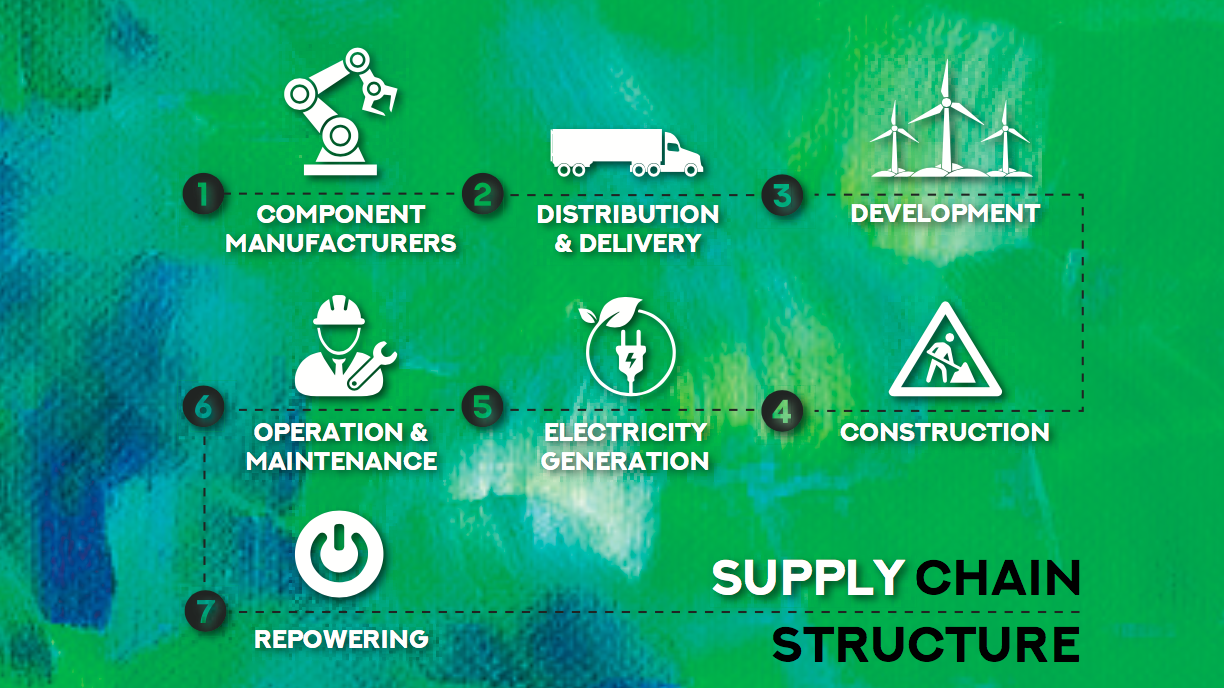The first wave of renewables development brought associated investments of more than EUR 8 bn. However, the Romanian business environment was not yet ready to capture a significant share. Development, construction and the O&M side were handled by national actors, but most of the components were imported. With this new wave of development, the Romanian economy has come into its own and it is now high me for it to capture a significantly larger share of value creation.
The opportunity for a strong local supply chain is rooted, on the one hand, in the fact that already installed capacities require progressively more complex maintenance work, and repowering operations are on the horizon. On the other hand, Romania will need significant resources ( financial, human and technical) to install new capacities (be they photovoltaic, onshore or o shore wind), resources that the country does not currently have. Sourcing components and services from international markets is an option, but this comes with a multitude of disadvantages, from high transportation costs to long purchasing timelines. Producing components for wind turbines or PV panels, software or storage equipment are just a few examples of what can be done here, and that can contribute to the broader development of the Romanian economy.
So far there are local production sites for bearings and forgings, along with ones for generators and electrical control systems for turbines. In addition, Romania benefits from the experience of a wind turbine technician training center in Constanța, that has been producing experts covering the needs of multiple regional markets and is already preparing o shore technicians.
In the case of a sustained development of o shore wind in the Black Sea, Romania has a major asset in Constanța Harbor, that components manufacturers can take advantage of for transportation and shipping purposes. In addition, integrating new renewable energy capacities opens opportunities for developing the clean transport sector (including charging infrastructure), as well as energy storage solutions, allowing battery and hydrogen value chains to be developed at the national level, with applications also in decarbonizing heavy industrial processes, besides sustainable transport.
Throughout their positions and participation in public events, such as RESInvest, the Romanian renewable industry constantly called for support to attract and develop local value chains, based on the size of the national and regional markets. Romania finds itself at a crossroads, and growing the local supply chain means taking the road to slowly closing the socio-economic gap with Western European countries.
Undoubtedly, the RES sector has a significant potential of offering quality, well-paying jobs, but smart and forward-looking state policies must be adopted in order to create the right investment environment and the needed human capital.
Ways to attract new manufacturers & service providers:
- An effcient promotion to domestic and foreign players of the timely opportunity for a RES supply chain in Romania (i.e. through programs such as RESInvest initiated by the industry in 2021)
- A reliable forecast of the needed volumes of equipment and services to create long term visibility for investors
- An incentivizing national framework (eg. green financing instruments, tax incentives, minimum local content)
- Training & recruitment programs to expand the available talent pool.
This article was originally published in The Code of Good Practice for Renewable Energy in Romania which will be launched on May 26th 2021. You can attend the launch event by registering here.

